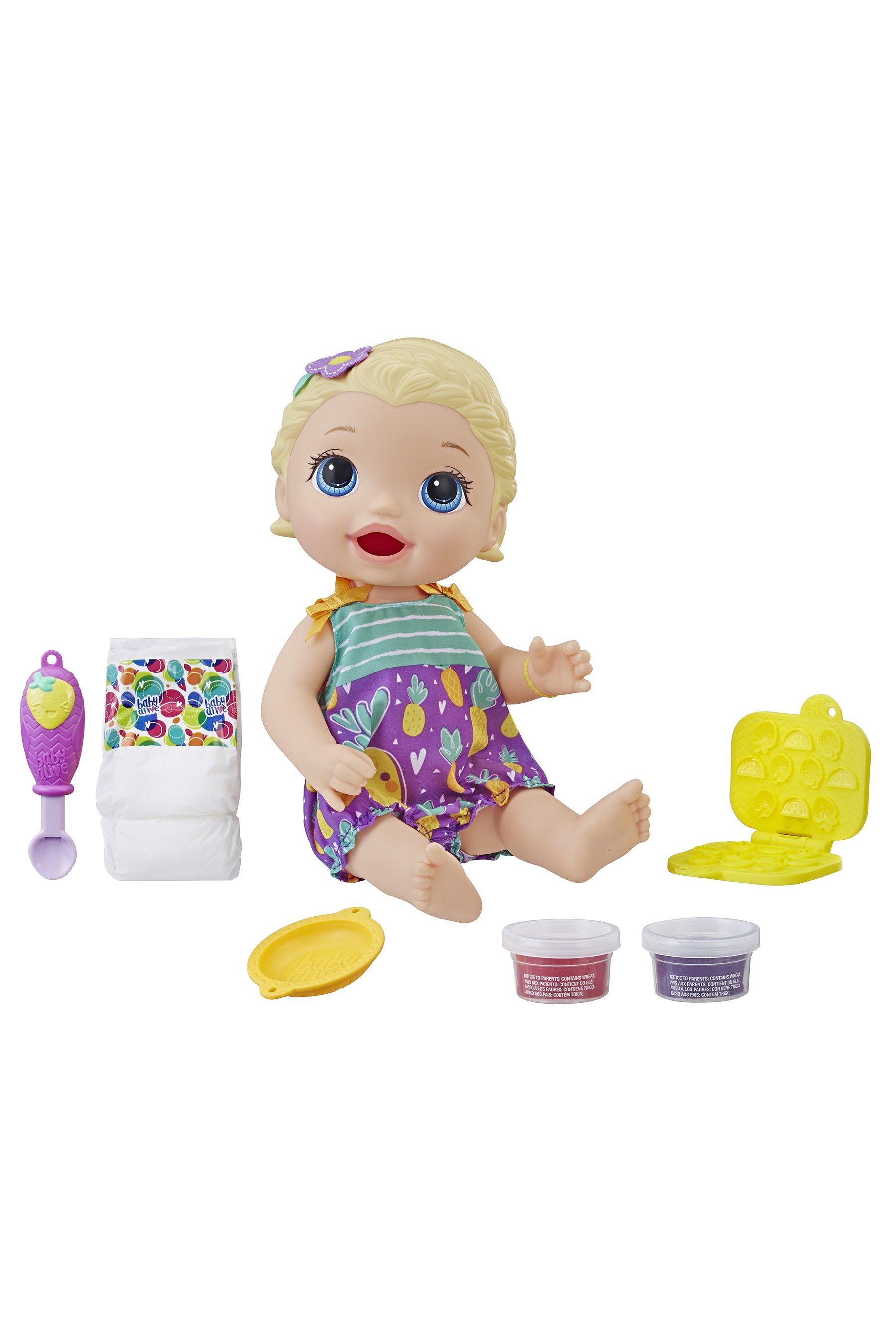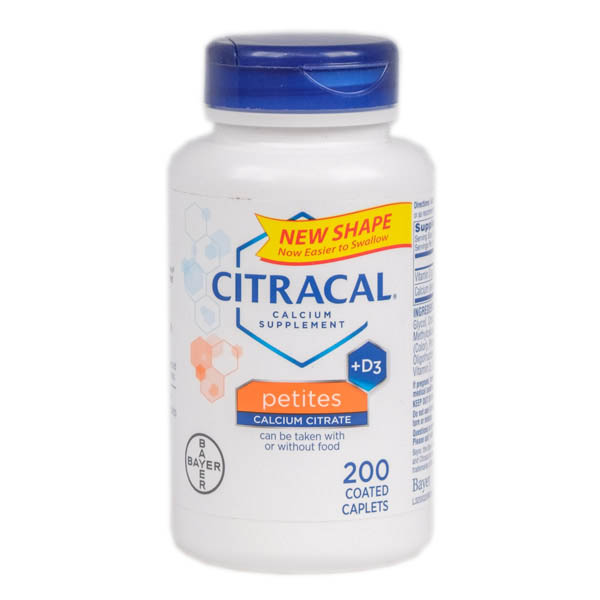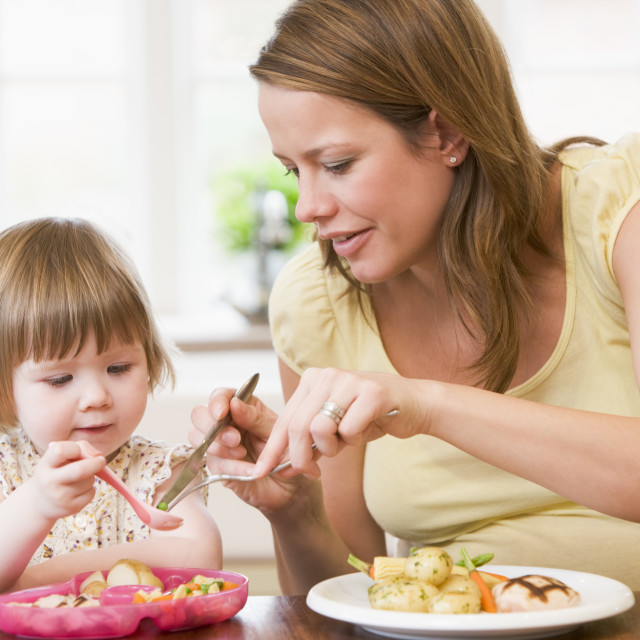Tube feeding baby bunnies
Nasogastric Tube Placement in the Rabbit
Date: June 9, 2011, updated with video March 25, 2013
By: Joanne Paul-Murphy, DVM, DACZM
Second Author:Christal Pollock, DVM, DABVP (Avian Practice)
Reviewed by: Natalie Antinoff, DVM, DABVP (Avian Practice), M. Scott Echols, DVM, DABVP (Avian Practice), Marla Lichtenberger, DVM, DACVECC, and Susan Orosz, PhD, DVM, DABVP (Avian Practice), DECZM
Keywords: enteral, feeding tube, nasogastric
Categories: Mammals, Rabbit, Emergency Medicine Resources & Education
Video
Video produced by M. Scott Echols, DVM, DABVP (Avian Practice) and narrated by Marla Lichtenberger, DVM, Dipl. ACVECC. Video script adapted from Dr. Paul-Murphy’s article by Christal Pollock, DVM, DABVP (Avian Practice). Video script reviewed by Drs. M. Lichtenberger , M.S. Echols, Natalie Antinoff, DVM, DABVP (Avian Practice) and S. Orosz, DVM, DABVP (Avian Practice), DECZM.
Introduction
When a rabbit is weak, dehydrated, and has been anorectic for more than 24 hours, use of a nasogastric (NG) tube can be less stressful and more successful than syringe feeding (Fig 1). Nasogastric intubation is also indicated in rabbits that will undergo surgery involving the oral cavity, esophagus, stomach, or biliary tract. Enteral feeding is an essential component in recovery from illness, as it delivers calories, rehydrates stomach contents, promotes gastrointestinal motility, and prevents hepatic lipidosis. Overweight, anorectic rabbits are particularly at risk for developing hepatic lipidosis.
Figure 1. Nasogastric tube placement can be more successful than syringe feeding in the weak, dehydrated rabbit that has been anorectic for more than 24 hours. Click image to enlarge.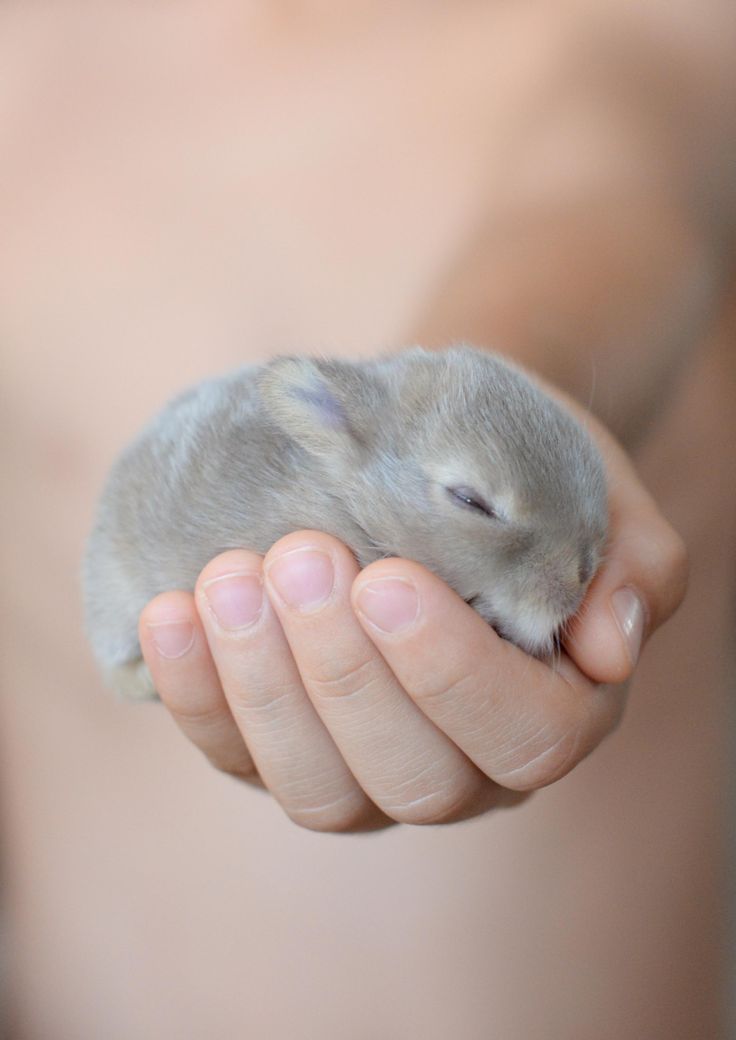
Equipment needed
- 3.5-to 8-French soft, flexible, pediatric feeding tube (Argyle tube, Kendall Company). This tubing is softer than a red rubber tube, and a stylet is not necessary. Select an 8-French tube for larger rabbits (Oryctolagus cuniculus) and a 5-French tube for large guinea pigs (Cavia porcellus). Use a 3.5-French tube in small guinea pigs.
- Local anesthetic (i.e. 2% lidocaine gel, lidocaine viscous, or proparacaine hydrochloride)*
- Syringe, 6-12 mL
- Water-based lubricant
- Tape
- Suture material or surgical staples, white porous tape, and needle holders, or surgical glue and latex glove
Technique for nasogastric tube placement in the rabbit:
- Determine the length of tubing necessary to reach the stomach by measuring from the tip of the nose to the last rib (Fig 2). Mark this point with a piece of tape on the tube or with a permanent marker. Determine the volume needed to flush the tube.

Figure 2. Determine the tube length needed to reach the stomach by measuring from the tip of the nose to the last rib. Click image to enlarge.
- Place a local anesthetic into the rabbit’s nares at least 2-3 minutes before tube placement. Instill both nostrils in case tube placement must be attempted in the other naris. Briefly elevate the head to promote coating of the nasal mucosa with local anesthetic (Fig 3).
Figure 3. Instill a local anesthetic into both nares. Click image to enlarge.
- Have an assistant properly restrain the rabbit. Protect its back and flex the head ventrally, ensuring the neck is straight to avoid tracheal compression.
- With a generous amount of lubricant at the tip of the feeding tube, gently insert the tube ventromedially into the ventral nasal meatus(Fig 4). Do not use a stylet, as the esophageal mucosa is delicate and easily torn.
Figure 4. Tilt the head up to gently insert the tube into the ventral nasal meatus.
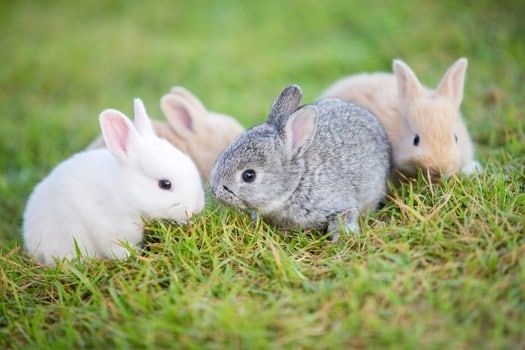
Direct the tube ventromedially. Click image to enlarge. - Rabbits that will not tolerate nasogastric intubation with topical anesthetic alone will need heavy sedation or light anesthesia to place the nasogastric tube.
- Advance the tube until the end reaches the stomach (previously marked in Step #2)(Fig 5).
Figure 5. Once the tube is in the ventral nasal meatus, place the neck in a normal, flexed position to allow the tube to slide into the oropharynx and esophagus instead of the trachea. Click image to enlarge.
If resistance is met, gently withdraw the tube and attempt to pass it while gently rotating the tube. If the tube still cannot pass, then place the tube in the other nostril. Occasionally an elongated tooth root can cause resistance.
- Verify tube placement using more than one method:
- Secure the tube to the nose using tape tabs and suture (Fig 7), or secure it further along the length of the tube between the ears where surgical staples can be applied (Fig 8).

Figure 7. The tube can be secured to the nose using butterfly tape and suture. Click image to enlarge.
Figure 8. The nasogastric tube can also be secured between the ears. Click image to enlarge.
Another method uses surgical glue and a cut piece of latex glove. Insert your index finger into a latex glove and place the finger firmly over the tube as it passes over the rabbit’s nose. Liberally apply surgical glue between the glove and the tube, holding the tube in place until the glue has begun to set. Then carefully remove your finger from the glove, trimming all but a small patch that overlies and anchors the tube.
- Curve the tube up between the eyes and ears and along the back of the head.
- Cap the tube opening to prevent air from building up within the stomach.
- Rabbits generally tolerate NG tubes well, and it is best to avoid surgical collars for rabbits. However, if necessary, use of a soft, recovery collar will prevent premature tube removal and is usually well tolerated.

Tube feedings
Deliver Emeraid Intensive Care Herbivore or Emeraid Sustain Herbivore slowly by syringe into the NG tube every 6 hours. Use a small syringe (i.e. 3 ml or smaller) to minimize the pressure on the small-diameter tube (Fig 9). Emeraid IC Herbivore is a partially elemental diet designed for the critically ill herbivore, so it is particularly well suited for feeding a rabbit that requires NG tube placement. Emeraid Herbivore easily passes through a 5-French tube; the formula must be diluted slightly to pass through a 3.5-French tube (Marla Lichtenberger, personal communication, June 21, 2011). Critical Care Fine Grind (Oxbow Animal Health; Murdock, NE) is an alternative product.
Figure 9. Using a small syringe, slowly deliver food every 6 to 8 hours to minimize pressure on the small-diameter nasogastric tube. Click image to enlarge.
Follow every feeding with at least 5-6 ml of water to keep the tube patent, and monitor the rabbit carefully for stool production. Slightly soft droppings are typically seen within 12-36 hours.
Slightly soft droppings are typically seen within 12-36 hours.
Continue to offer greens, grass hay, and water free choice as the rabbit can still eat, drink, and swallow around the tube.
Tube removal
The NG tube may be left in place for weeks or until the rabbit is eating on its own and producing stool. The tube is easily removed in the conscious rabbit.
Contraindications and potential complications
Absolute contraindications for NG intubation include severe trauma to the midface or recent nasal surgery. Relative contraindications are also quite rare and include coagulopathy, esophageal stricture, and alkaline ingestion.
In human medicine, reported complications vary widely from 0.3% to 8.0%. The most common problems are tube-related and include tube knotting and impaction, the tube doubling back and kinking, tube breakage, or tube obstruction and rupture with syringing. Epistaxis may also occur, but generally can be avoided by generously lubricating the tube tip and using gentle technique.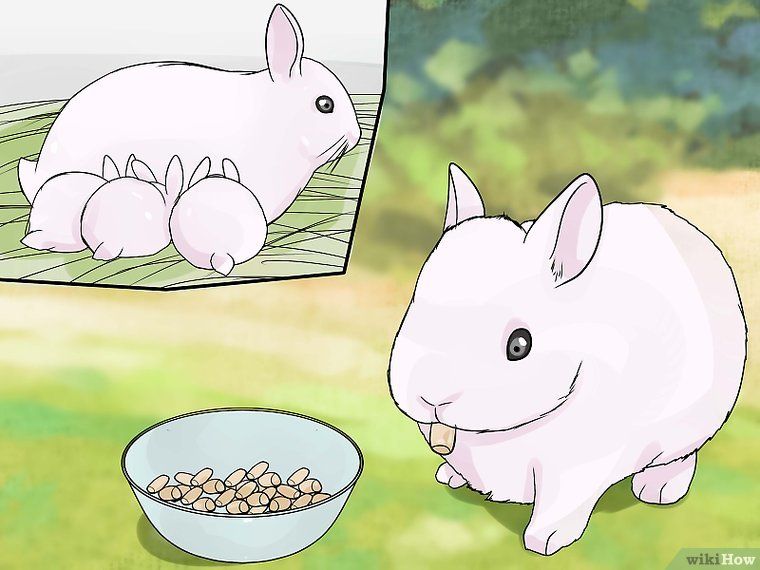 Nasal discharge can also be observed with tube irritation or contamination of the lower respiratory tract. In these instances, remove the tube and implement antibiotic therapy (Fig 10). Other potential albeit uncommon complications include bronchial placement leading to atelectasis, pneumonia and lung abscess. In some rabbits, tube or collar placement can also be extremely stressful for the severely debilitated rabbit leading to secondary gastrointestinal stasis.
Nasal discharge can also be observed with tube irritation or contamination of the lower respiratory tract. In these instances, remove the tube and implement antibiotic therapy (Fig 10). Other potential albeit uncommon complications include bronchial placement leading to atelectasis, pneumonia and lung abscess. In some rabbits, tube or collar placement can also be extremely stressful for the severely debilitated rabbit leading to secondary gastrointestinal stasis.
Figure 10. Remove the tube immediately if nasal discharge develops. Click image to enlarge.
References
References
Brown C. Nasogastric tube placement in the rabbit. Lab Anim 39(1):14-15, 2010.
Paul-Murphy J. Critical care of the rabbit. Vet Clin North Am: Exot Anim Pract 10(2):437-461, 2007.
Pillai JB, Vegas A, Brister S. Thoracic complications of nasogastric tube: review of safe practice. Interact Cardio Vasc Thorac Surg 4(5):429-433, 2005.
To cite this page:
Paul-Murphy J. Nasogastric tube placement in the rabbit. March 25, 2013. LafeberVet Web site. Available at https://lafeber.com/vet/nasogastric-tube-placement-in-the-rabbit/
Nasogastric tube placement in the rabbit. March 25, 2013. LafeberVet Web site. Available at https://lafeber.com/vet/nasogastric-tube-placement-in-the-rabbit/
Feeding Wild Rabbits, the Do’s and Don'ts
While some people see wild rabbits as pests that they need to keep out of their garden, many of us actually love seeing rabbits in the yard and worry about their well-being. I always get a little sad thinking about wild rabbits in the winter since I know the scarcity of resources available means many won’t make it through to spring. Still, it’s usually best not to feed wild rabbits directly, because it will make them wholly dependent on humans for food.
You can help wild rabbits have food resources by planting shrubs and greenery that will live through the winter. This will make more resources available while also working with a wild rabbit’s natural foraging instincts. You can also grow plants year-round to give wild rabbits more nutritious options.
Those of you who live in areas where the wild species of rabbits are endangered or threatened may be especially concerned about the wild rabbits in your neighborhood. For example, European Rabbits have been the subject of a couple of different very contagious diseases over the past decades, causing their numbers to dwindle. They have recently been categorized as Near Threatened. Other species, such as the New England Cottontail, are also being subject to conservation efforts to help increase the wild rabbit numbers.
For example, European Rabbits have been the subject of a couple of different very contagious diseases over the past decades, causing their numbers to dwindle. They have recently been categorized as Near Threatened. Other species, such as the New England Cottontail, are also being subject to conservation efforts to help increase the wild rabbit numbers.
- Related Reading: What to do if you find a baby rabbit nest on your lawn
What do wild rabbits normally eat?
Rabbits are natural foragers. They will eat just about any kind of plant material they can find. Throughout most of the year, this will consist of grass combined with yummy leafy plants they can find naturally, such as clover and wildflowers.
While there are certainly plants and flowers that are poisonous to rabbits, for the most part they have a digestive system that is able to handle plant material better than other, carnivorous animals. This means that wild rabbits can eat a wide variety of plants from their surrounding environment to eat more nutrients and stay healthy.
Examples of a natural wild rabbit diet include:
- Grasses: wheatgrass, meadow grass, fescue, bluegrass, ryegrass, Bermuda, orchard, timothy, etc. Typical lawn grass is edible for wild rabbits but is less nutritious than wild grasslands.
- Weeds: dandelion, clover, crabgrass, ragweed, nettle, chickweed, etc.
- Bark and twigs: Willow bark and twigs, apple tree sticks, raspberry and blackberry bush twigs, birch, poplar, rose bushes and twigs, maple, cottonwood, etc.
- Flowers: Roses, daisies, sunflowers, marigold, lavender, chamomile, violets, pansies, etc.
- Herbs: Cilantro, parsley, basil, mints, oregano, sage, thyme, rosemary, dill, etc.
When they are available, wild rabbits will also eat fruits and vegetables from gardens or bushes. However, these are a much smaller part of their natural diet than most people think. Flowers, leafy plants, and grass make up the vast majority of what wild rabbits eat on a daily basis.
What do rabbits eat in the winter?
In the winter, when plant life is scarce, wild rabbits need to be a lot more creative in order to survive. The rabbits need to compete for limited resources such as bark, twigs, and evergreen and pine needles from trees and shrubbery that live through the winter. This is always a time of year that is most difficult for rabbits and results in the death of many rabbits who cannot get enough to eat during the winter.
How much do wild rabbits eat?
In the 1970s and ’80s, there were several studies that studied domestic rabbits and determined they will naturally eat approximately 65-80 grams per kilogram of body weight. Recently, a study in Australia studied the diet of wild rabbits and found very similar numbers. They found that wild rabbits eat 65.7-68.3 grams per kilogram of body weight. So we can assume these numbers are more or less accurate for wild European rabbits (the invasive species in Australia and the species of domestic rabbits)
In the Americas, the rabbits we see in the wild are cottontails, a different species altogether. Their exact food intake has not been studied to the extent that European rabbits have, but I think it’s fair to assume that the diet of these related species will at least be in the same ballpark.
Their exact food intake has not been studied to the extent that European rabbits have, but I think it’s fair to assume that the diet of these related species will at least be in the same ballpark.
Therefore, since most adult wild rabbits will weigh about 1.0-1.5kg, we can assume they will eat about 65-120g per day. Growing rabbits and pregnant or lactating rabbits will eat more than this.
Compared to a human diet, this is a pretty small amount. Think about it, a single strawberry that weighs 12g (on average) is already one-sixth of a rabbit’s daily food intake. Wild rabbits are not going to need much from you to be able to keep up their daily calories.
Instead, wild rabbits will be able to consume most of their necessary food as grass and leafy plants. They do a lot of grazing and foraging and will usually stop eating once they’ve had enough.
When will you usually see wild rabbits eating?
If you’re hoping to catch a glimpse of your backyard rabbits eating, the best times to look are around dawn and dusk when the light is dim, but not fully dark yet. This is the time of day when rabbits are most active. They’re not nocturnal, but they typically don’t come out much during the day for fear of daytime predators, like dogs and large birds.
This is the time of day when rabbits are most active. They’re not nocturnal, but they typically don’t come out much during the day for fear of daytime predators, like dogs and large birds.
They’ll also be more likely to go for any food left out if it’s away from any areas with high foot traffic. Try placing any food or planting gardens away from the main doors and walkways.
Is it okay to feed wild rabbits?
There is nothing wrong with feeding wild rabbits in your yard. Rabbits do not spread disease and aren’t generally a nuisance knocking over garbage cans or being destructive toward people’s homes and furniture. However, if your neighbors are trying to grow a garden, they may get annoyed at you for feeding and encouraging the rabbits to stick around, since rabbits can chew up and destroy gardens.
If you do want to feed the rabbits in your community, the best thing to do is try to feed them naturally with your own garden and lawn. However, if you want to do more, there are plenty of healthy foods you can leave out for wild rabbits to help feed them.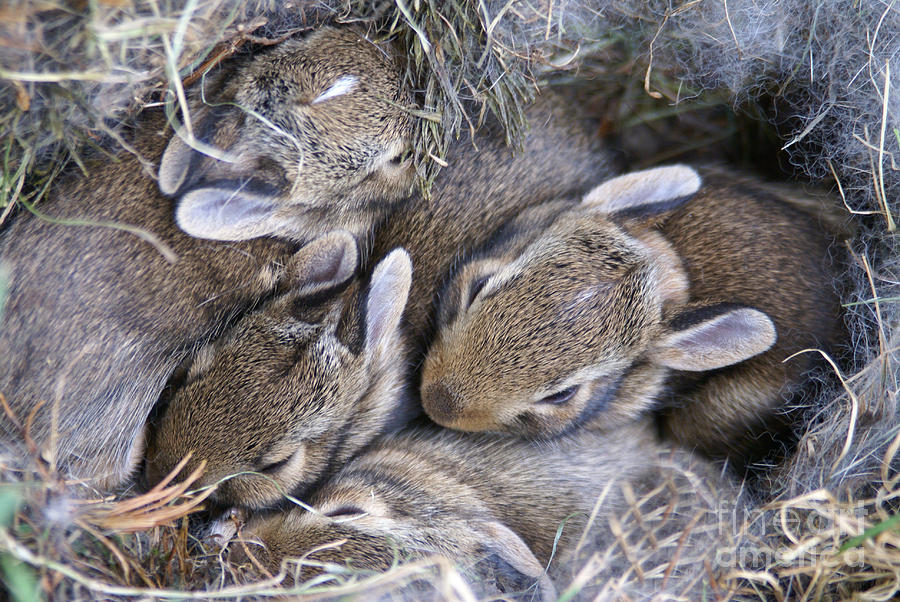 You might be more inclined to do this in the winter when overall food resources are scarce.
You might be more inclined to do this in the winter when overall food resources are scarce.
Overall, you still want to avoid allowing the local rabbits to become too reliant on you as a food source. Leaving out a few scraps of vegetables every now and then is fine, but you might want to avoid doing this every single day. I also recommend spreading any vegetable scraps or rabbit food over a large area or your entire yard instead of placing them in a single pile. This will give the rabbits a chance to forage, which is a more natural way for rabbits to behave and find food. It won’t soften their natural instincts.
You also want to be careful about attracting other types of wild animals to your yard. Wild rabbits aren’t the only animals that are going to be attracted to free food, so you may be accidentally driving the rabbits away if you attract their natural predators instead.
Vegetable scraps
The odds and ends of many fruits and vegetables used in cooking can be collected and scattered in the yard for wild rabbits.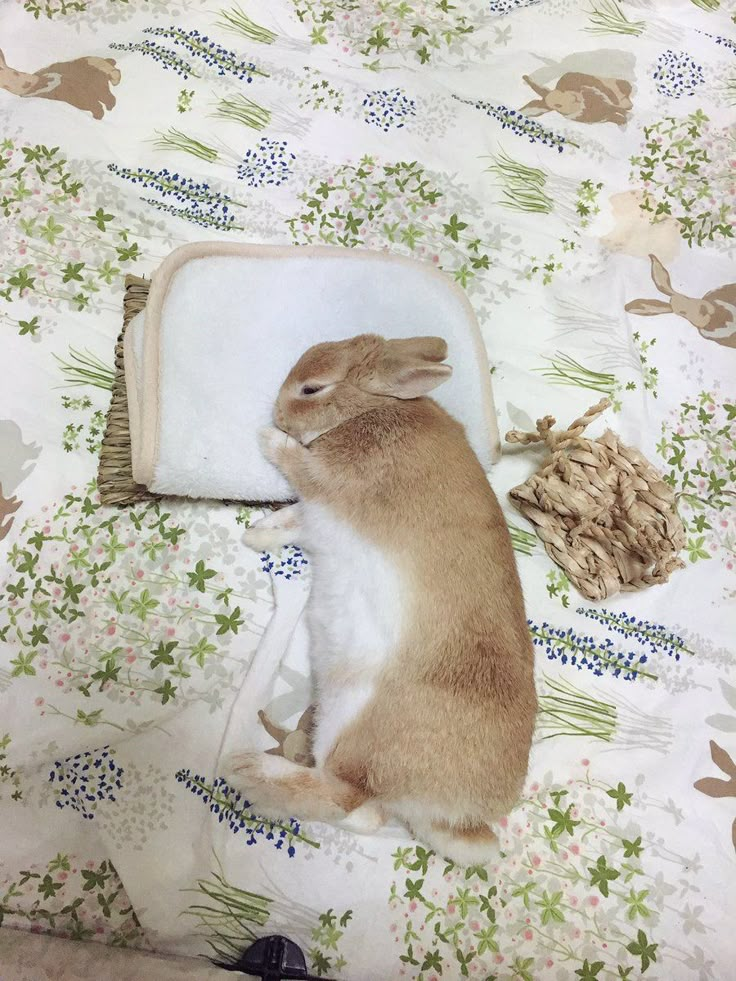 This is probably the easiest way to feed wild rabbits since you probably already throw away or compost these. However, this is also the riskiest method since it’s the most likely to attract other types of animals to your yard, which may include rabbit predators.
This is probably the easiest way to feed wild rabbits since you probably already throw away or compost these. However, this is also the riskiest method since it’s the most likely to attract other types of animals to your yard, which may include rabbit predators.
Vegetable scraps include the leafy parts of carrots, strawberries, broccoli, celery, brussel sprouts, cauliflower, and similar fruits and vegetables. Unused stems from fresh herbs are excellent for rabbits too. Vegetable scraps can also include apple peels, and odds-and-ends from zucchini, squash, berries, cucumber, and bell peppers.
You can also give wild rabbits leftover leafy greens. Some examples of good veggies for rabbits include:
- Swiss chard
- Collard greens
- Herbs (such as mint, and cilantro)
- Parsley
- Spinach
- Cabbage
- Beet greens
- Watercress
- Mustard greens
- Romaine lettuce
- Bok choy
- Kale
- Endive
I recommend not putting it all in one pile in the yard, since this is more likely to attract predators. Place a couple of pieces here and there around the yard to give the rabbits a chance to forage for the yummy treats you left for them. This will also encourage them to have a more balanced diet and eat grass too (which is good for their digestion), instead of chowing down on all the fruits and veggies at once.
Place a couple of pieces here and there around the yard to give the rabbits a chance to forage for the yummy treats you left for them. This will also encourage them to have a more balanced diet and eat grass too (which is good for their digestion), instead of chowing down on all the fruits and veggies at once.
Vegetable scraps that you want to avoid giving wild rabbits include potato and potato vines, tomato vines (the fruit is okay), anything related to onions (including garlic), corn, beans, nuts, and avocado.
- Check out this list of foods that are safe for rabbits to eat
Hay or dried grass
If you want to go out and purchase hay from a farmer or pet store, this can also be a healthy food to provide for wild rabbits. They might ignore this kind of food offering in the spring and summer since they usually have enough grass available, however, dried grass or hay can be a good substitute for wild rabbits in the rough winter months. You can spread the hay out in a layer over a section of your garden or lawn for the rabbits to munch on.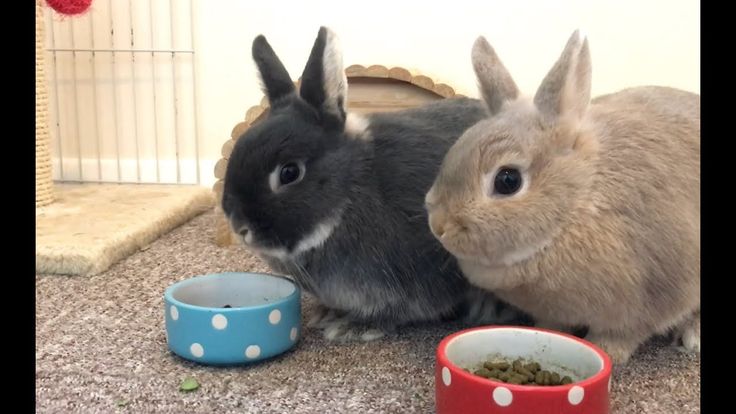
Commercial dry rabbit food
The other thing you can do to directly feed wild rabbits is go out and purchase a bag of rabbit food from a pet store. I recommend getting a brand that is made up of plain brown pellets and doesn’t have many extra colorful or fruity bits. The plain kinds are usually higher quality and more nutritious. They contain less added sugar, which can be detrimental to a rabbit’s health overall.
Again, I recommend taking handfuls of pellets and spreading them across the lawn or yard instead of placing them in a single bowl for rabbits. This will help to encourage the natural foraging instincts of wild rabbits.
When food is scarce in the winter, rabbits may resort to eating the bark off of bushes or trees.The natural way to feed wild rabbits
If you want to feed the wild rabbits in your community, it’s best to give them a natural way to continue foraging for food. If you try to feed wild rabbits directly or simply leave out bowls full of food for them, you run the risk of causing the rabbits to become completely dependent on you for food. It could soften the natural instincts of any rabbits that live nearby, making them less able to survive on their own.
It could soften the natural instincts of any rabbits that live nearby, making them less able to survive on their own.
That’s why it’s a better solution to try to find ways to feed wild rabbits by caring for your lawn or planting a garden that is a safe and welcome environment. You can provide the rabbits in your area with a wide variety of plants to eat, and a nutritious lawn to graze on. It’s also an excellent idea to think of rabbits in winter and take the time to plant bushes or trees that can give wild rabbits more natural resources to eat in the scarce season.
This is a more sustainable way of keeping wild rabbits fed, along with other herbivores in the neighborhood, like squirrels and chipmunks. This is also less likely to attract other types of animals that may be predators to rabbits. For example, raccoons (a main predator of rabbits) may be attracted to food scraps left out, but probably won’t be attracted to a garden.
Gardening for wild rabbits
Planting some vegetables, such as carrots and leafy lettuces, are also a great way to help feed wild rabbits in a natural and nutritious way. Rabbits can snack on the delicious leaves, but usually, there’ll still be some left over for you to eat. Herb gardens are also excellent for wild rabbits. These can provide a wide variety of delicious plants that are also super nutritious for rabbits to eat.
Rabbits can snack on the delicious leaves, but usually, there’ll still be some left over for you to eat. Herb gardens are also excellent for wild rabbits. These can provide a wide variety of delicious plants that are also super nutritious for rabbits to eat.
Contrary to popular belief, wild rabbits usually won’t dig vegetables out from underground. However, they will eat the shoots and leaves as they are growing. You just may have to accept that the wild rabbits in the neighborhood might eat these plants when they are still growing before you have a chance to use them for yourself.
Most plants are safe for wild rabbits to eat. They have a pretty hardy stomach for anything fibrous and leafy. However, plants that you might want to avoid include potatoes, tomatoes, rhubarb, and anything in the onion family (including garlic). Probably the wild rabbits will simply ignore these plants, but they are mildly toxic and a rabbit who’s never smelled it before might not know the difference.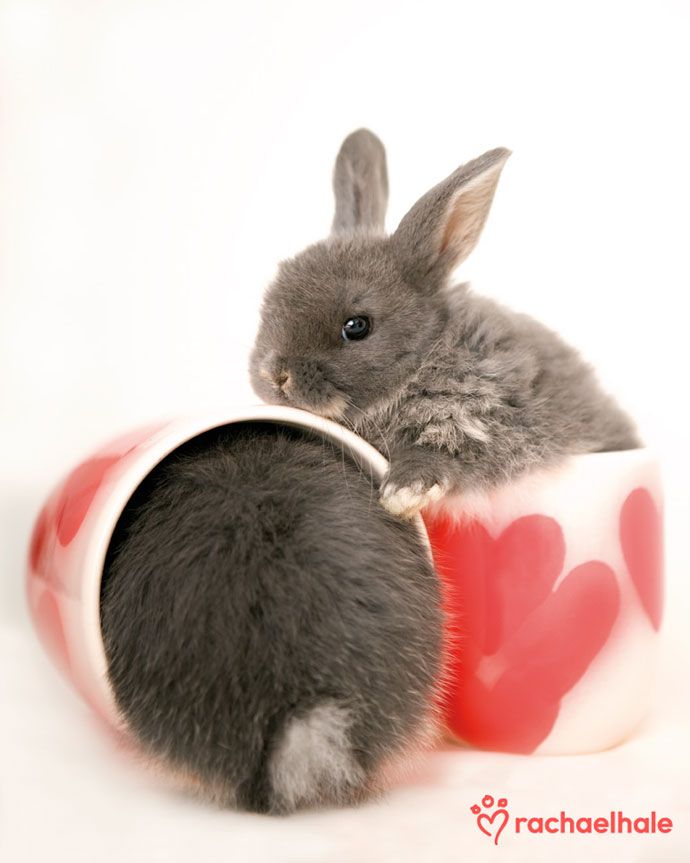
Lawn care for rabbits
The best thing you can do for your lawn and garden to help wild rabbits is to make sure you don’t use any kind of pesticides or fertilizers with dangerous added chemicals. These can end up poisoning rabbits and other animals in the area. Try to treat your yard like an organic garden so that you can keep all the plants safe for wildlife.
You can also allow your garden to grow like a meadow, instead of making it always look like pristine astroturf. You can let wildflowers grow in your yard, instead of pulling them out like weeds. Dandelions and patches of clover are nutritious for rabbits and excellent for them to eat. Letting your grass grow longer without frequent mowing can also encourage rabbits to come and forage.
Plants to feed rabbits in the winter
If you’re thinking about wild rabbits in the winter, you’ll want to provide them with woody and twiggy bushes and shrubbery that they’ll be able to eat. Some good plants include berry bushes, such as raspberry or blackberry plants. Some trees, such as oak, sumac, and dogwood are also good options to give rabbits, especially if they are younger trees. Young trees tend to have softer bark, which is more appetizing to rabbits.
Some trees, such as oak, sumac, and dogwood are also good options to give rabbits, especially if they are younger trees. Young trees tend to have softer bark, which is more appetizing to rabbits.
Planting tall evergreens and evergreen bushes is another option that can be beneficial to wild rabbits. They can chew on the branches and eat the needles, and these trees and bushes also give rabbits places to hide and take cover during the winter. When foliage is more sparse, rabbits have a harder time hiding away from predators, so these trees can give them a little more advantage and give them a better chance of surviving the winter.
Water in dry climates
If you live in an area that has a particularly dry climate or is going through a dry spell, it’s okay to leave out bowls of water for rabbits. To make sure mosquitos don’t nest in the area and bacteria don’t start to accumulate in the bowls, you’ll want to replace the water every day or so and occasionally clean out the bowls or water trough completely.
How much water do wild rabbits need?
Rabbits can actually drink quite a bit of water. It’s approximated that rabbits can drink about 4 ounces per kilogram of weight. So most will drink about 4-8 ounces per day. However, it’s also important to remember that rabbits will get a lot of their water from their diet. Grass, flowers, and leafy plants all contain water that helps to keep wild rabbits hydrated.
Should you worry about plants and flowers that are toxic to rabbits?
In general, there’s no need to avoid planting flowers that might be toxic to rabbits. Wild rabbits have excellent instincts that help them to discern which plants are edible and which are not. In addition, rabbits are much more capable of digesting high-fiber plant substances than other animals. They have a unique digestion that takes fiber and quickly pushes it through their digestive system. So for the most part, you can plant what you want without worrying about poisoning your local wildlife.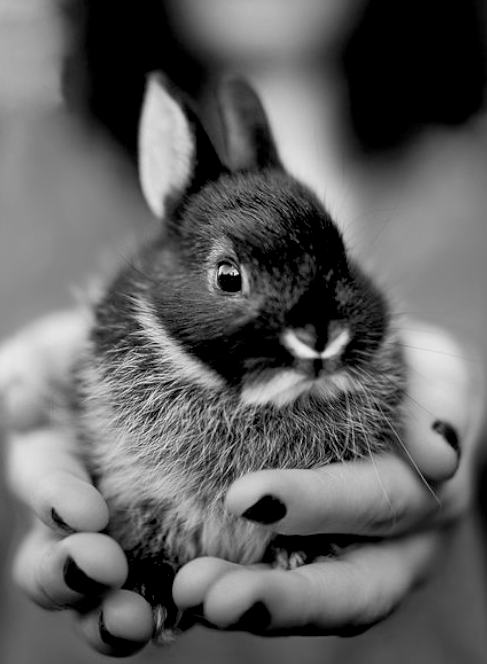
The only times I would hesitate to grow something that might be poisonous to wild rabbits is when it’s a plant that is not native to the region you live. In most cases, the rabbits just won’t touch these, since they tend to be abundantly cautious, however, they also don’t have the instincts to know if these particular plants are bad for them. In winter months or when food is scarce, the rabbits might try to eat these plants, which would not be good.
- Learn more about what plants are poisonous to rabbits
What to AVOID doing when feeding wild rabbits
It’s best to help feed wild rabbits by providing food for them naturally. This will prevent them from becoming dependent on you for food. Big piles of food in the yard can also attract other unwanted animals that may be more dangerous or prone to spreading disease (such as raccoons). However, if you want to occasionally scatter some leftover leafy greens in the yard for wild rabbits to eat, there is nothing wrong with that.
Leftover herbs, strawberry or carrot tops, or the trimmed ends of many different fruits and vegetables are safe for wild rabbits to eat in small quantities. Instead of tossing these leftovers in the garbage, you put them outside for the rabbits. But try not to make this a daily habit.
However, not all foods are good for wild rabbits to eat. They can handle high-fiber grasses well but have a much more sensitive stomach when it comes to just about everything else.
Birdseed
Most seeds and nuts are not great for a rabbit’s digestion. There are some exceptions, such as sunflower seeds, but for the most part, you want to avoid setting these out where wild rabbits can eat them. Even though birdseed is not good for rabbits, they will probably try to eat it anyway if they find it available. Keep the birdseed for the birds and let rabbits eat the leafy plants that are healthy for them.
High sugar foods
Many commercial rabbit treats that you’ll find in the pet store have many colorful fruity parts to them. Most of these are not healthy for rabbits, whether domestic or wild and are best avoided. This includes treat mixes, as well as yogurt treats that are widely available.
Most of these are not healthy for rabbits, whether domestic or wild and are best avoided. This includes treat mixes, as well as yogurt treats that are widely available.
Instead, if you want to leave some treats around, you can scatter pieces of fruits and vegetables in your yard, such as papaya, blueberries, or blackberries. Wait for the wild rabbits to come across the fruit as they are foraging for food. That will keep them from eating a pile of the sweet fruits and vegetables all at one time.
Cooked human leftovers
Most wild rabbits won’t touch cooked food, but it’s best to avoid making it available to them at all. Cooked food, even if it is all plant-based, is not good for a rabbit’s digestion. This includes anything that’s been mixed with a salad dressing or oil, even if it was never cooked. The added ingredients are not good for rabbits. Wild rabbits probably won’t touch these types of foods anyway.
Similarly, processed foods are not good for rabbit digestion and don’t have any nutritional value. Cereals, crackers, bread, granola bars, etc. should not be left out for rabbits to eat. Wild rabbits might try to eat these, but it’s like feeding them junk food and really should be avoided.
Cereals, crackers, bread, granola bars, etc. should not be left out for rabbits to eat. Wild rabbits might try to eat these, but it’s like feeding them junk food and really should be avoided.
Cat or dog food
If you have a cat or dog, you might think about leaving out a bowl of dry cat or dog food for the rabbits in your yard. Since dogs and cats are carnivores, their food is not suitable for rabbits, who are herbivores. Most of the time, rabbits won’t touch this kind of food, but it might attract other animals to the yard, like raccoons or neighborhood cats, that are predators of rabbits.
Milk
Giving milk to adult animals is an old tradition that is still commonly believed in some places. It’s time to put the myth to rest. Do not put a bowl of milk out for wild rabbits (or cats or any other animal). At best the rabbits will just ignore the milk, but at worst it can wreak havoc on their digestion. Remember, humans are one of the only animals that drink milk as adults.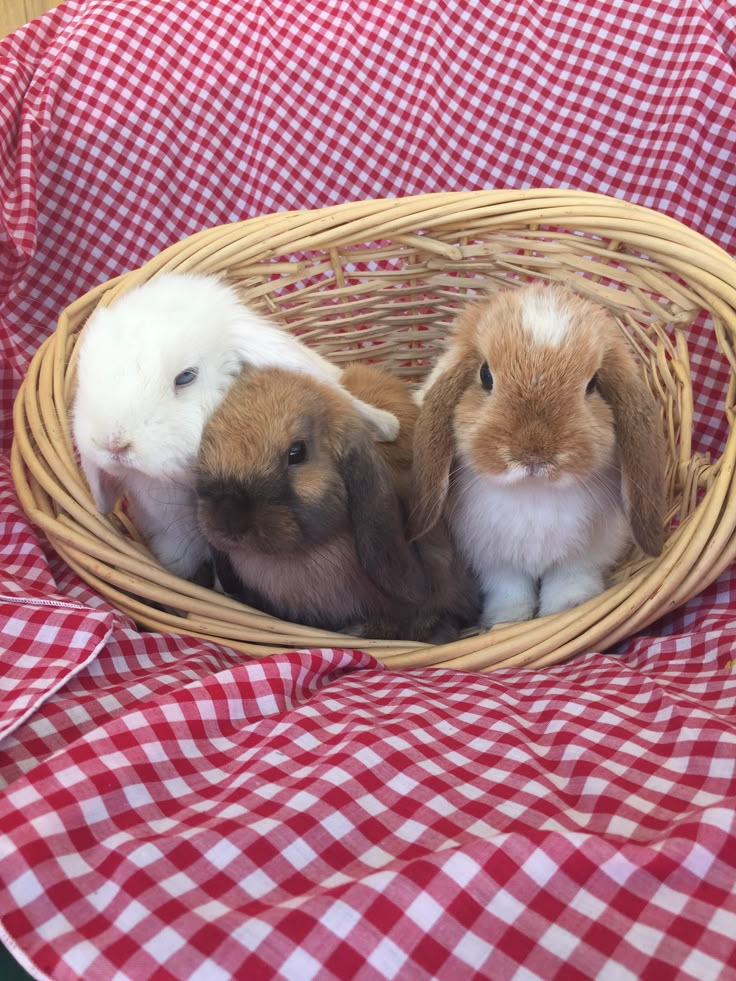
Even baby rabbits should not be given cow’s milk to drink. The components of cow’s milk are very different from a mother rabbit’s milk. It doesn’t have the necessary proteins and enzymes to make it beneficial for baby rabbits.
Feeding orphaned wild baby rabbits
Most of the time, if you find a baby wild rabbit nest you should just leave it alone. Wild cottontail rabbits, which are most of the species you will find in North America, will leave their young in a nest. They’ll come back to feed the babies once or twice a day. What might appear to be an abandoned nest is probably still being looked after by the mother rabbit.
If you are absolutely certain that the baby rabbits in question are orphaned and the mother is not coming back, then the best action to take is to try to find a wildlife rehabilitation center in your area that would be willing to take the rabbits in. It is very difficult to care for baby rabbits by yourself, and in most cases they won’t survive for very long.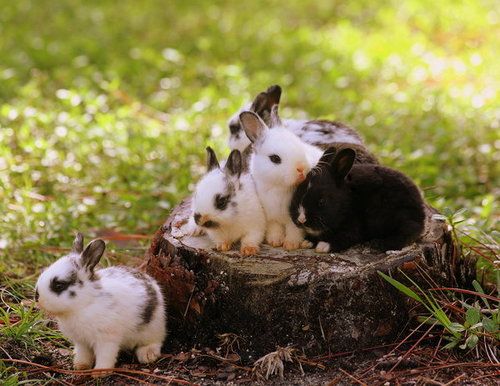
If you cannot find a rehabilitation center that will help you care for and feed these baby rabbits, then the House Rabbit Society has provided some instructions for feeding baby rabbits.
Feeding wild Rabbits in Captivity
If a wild rabbit is in captivity (due to injury, for example), there will be every attempt to feed them as natural a diet as possible. This means they will be offered a variety of greens, grass cuttings, and clover to help them eat adequately and recover. Sometimes they will also be given timothy hay and dried grass as well if there aren’t enough fresh greens available.
Sources
- Allman, Molly. “How to Make Rabbits Come to Your Yard.” SFGate. December 19, 2018. https://homeguides.sfgate.com/make-rabbits-come-yard-52448.html
- B. D. Cooke. “Daily food intake of free-ranging wild rabbits in semiarid South Australia.” Wildlife Research 41, pgs 141-148. June 2014. Accessed: https://www.publish.
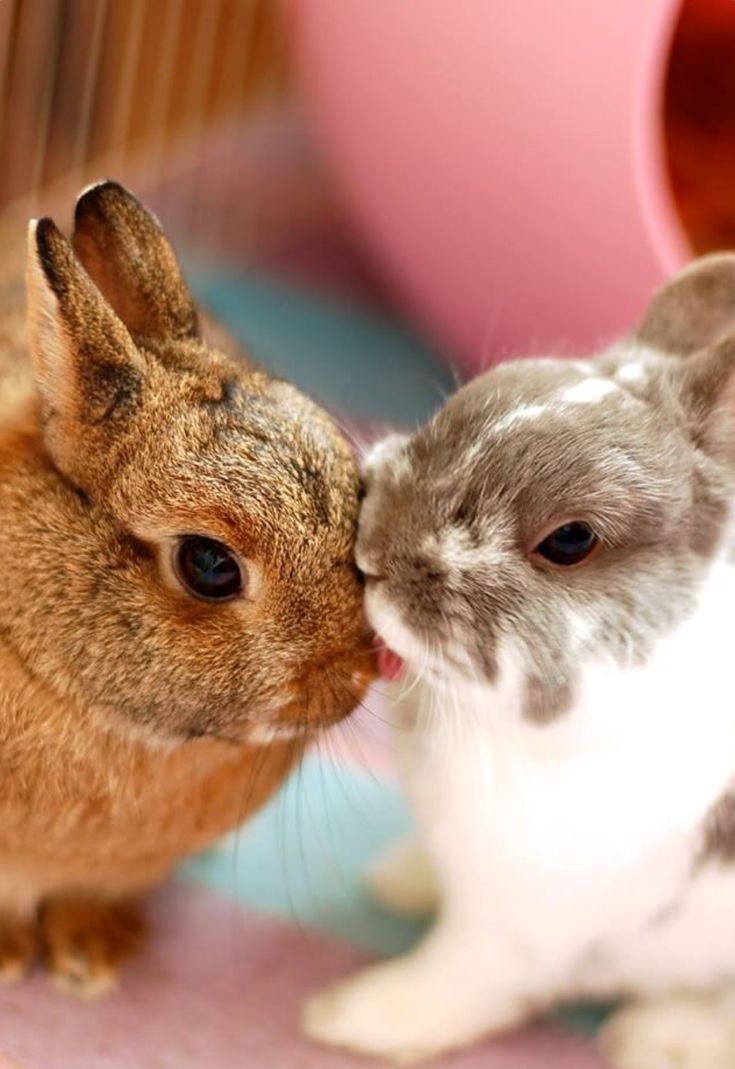 csiro.au/wr/wr14003.
csiro.au/wr/wr14003. - Duggan, Graham. “Rabbits at risk: Some species are among the most endangered mammals on the planet.” CBC. https://www.cbc.ca/natureofthings/features/rabbits-at-risk-some-species-are-among-the-most-endangered-mammals-on-the-p.
- Halls, Amy M.Sc. “Nutritional Requirements for Rabbits.” Nutreco Canada Inc. ResearchGate.net. October 2010. Pg. 3.
- Miguel Delibes-Mateos, Steve M. Redpath, Elena Angulo, Pablo Ferreras, Rafael Villafuerte. “Rabbits as a keystone species in southern Europe.” Biological Conservation. Science Direct. June 2007. https://www.sciencedirect.com/science/article/abs/pii/S0006320707000572.
- “Orphaned Baby Bunnies: Wild and Domestic.” House Rabbit Society. May 12, 2020. https://rabbit.org/faq-orphaned-baby-bunnies.
- Pollack, Christal DVM. “Basic Information Sheet: Cottontail Rabbit.” LefeberVet. March, 2013. https://lafeber.com/vet/basic-information-for-the-cottontail-rabbit.
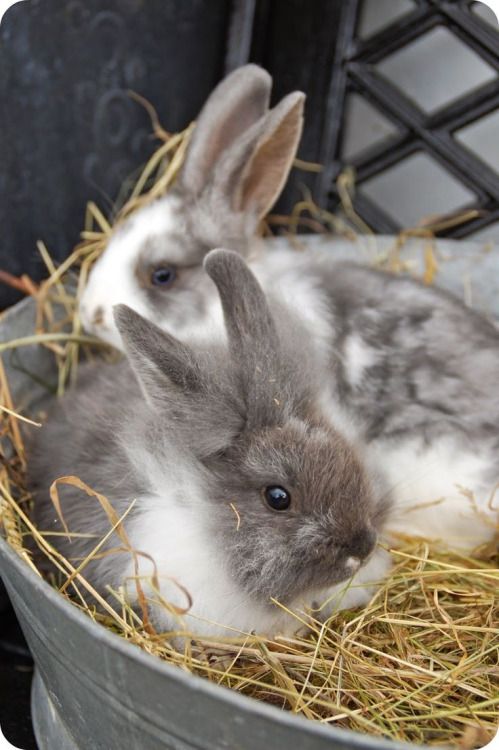
Tips and Tricks Newsletter
If you are new to caring for rabbits, check out the Bunny Lady bimonthly newsletter. Right after you sign up, you’ll receive a FREE pdf rabbit care guidebook. I put together a guide that goes over all the basics of rabbit care so you have it all in one place. Then you will receive tips and tricks about rabbit care straight to your inbox so that you know you’ll be taking excellent care of your new rabbit.
SIGN UP
Recommended Products and Brands
Important: These are Affiliate links. As an associate to Amazon, Small Pet Select, and Chewy.com, I may receive a small commission from qualifying purchases.
The two brands that I use when buying food for my rabbit are Oxbow and Small Pet Select. These both have high quality rabbit products and are companies that care about the health of our small animals. If you are purchasing anything from Small Pet Select use the code BUNNYLADY at checkout to get 15% off your first order.
- Hay: Second Cutting Timothy Hay from Small Pet Select
- Pellets: Oxbow Garden Select Food for Rabbits
- Treats: Oxbow Simple Rewards
- Toys: Small Pet Select Natural Toys
- Enclosure/cage: A rabbit exercise pen
- Learn why this is so much better than a traditional rabbit cage.
- Rabbit carrier: SleepyPod Mobile Pet Bed
- Read more about why I recommend this product.
How to feed rabbits at home
Proper feeding of rabbits requires balanced mixtures containing a certain norm of the necessary products and having a high nutritional value. Without observing this condition, it is impossible to achieve good growth and strong immunity in animals. By adjusting the diet of rabbits, you can improve the quality of meat and fur, increase the survival of offspring and maximize the potential of the breed.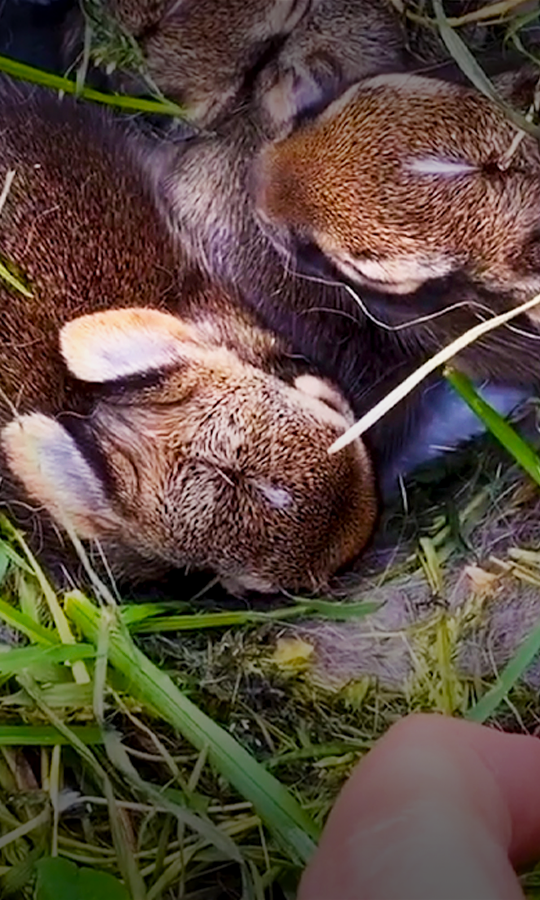
- What can rabbits eat?
- Benefits of specialty feeds
- Benefits of compound feed produced by MEGAMIX
- Feeding rates and rations
- Self-preparation of feed
- Nuances of feeding rabbits depending on the season
- What should not be fed to rabbits?
What can be fed to rabbits?
The metabolism of rodents is so intense that they need to constantly eat for the proper functioning of all body systems. If the rabbit for some reason stops eating, then during the day there is a malfunction in the digestive tract. This entails serious consequences for health, up to and including death.
Compound feed for rabbits is complete and concentrated. The first one provides all the needs of animals in calories and nutrients. The second is used as a supplement to the main diet. Young rabbits reach a commercial weight of 3.5–4.5 kg, provided that they are properly fed, at the age of 4–5 months, and an adult female brings 30 or more cubs per year. If the diet is balanced and meets the needs of the breed, the rabbit is capable of the next reproductive cycle as early as 3-5 days after birth.
If the diet is balanced and meets the needs of the breed, the rabbit is capable of the next reproductive cycle as early as 3-5 days after birth.
Livestock specialists have repeatedly researched the best way to feed rabbits. The diet of meat and decorative animals should include the following products:
Cereals (concentrated feed) have the highest nutritional value. They contain a large amount of protein and a minimum of water. Oats are considered the best grain, as they are well absorbed, have a positive effect on intestinal motility and reproductive functions, and do not contribute to obesity. It is used in the form of whole or crushed grains. Rye, barley and wheat are offered to rabbits in the form of crushed, mixed with other feeds.
It should be remembered that you can not give a lot of wheat, and it is better to remove the shell from barley. These grains are difficult to digest, often leading to bloating. Many farmers recommend pre-treatment of grain products: soaking, sprouting, steaming or yeasting. Sprouting allows you to increase the amount of vitamins and increase protein digestibility. Yeasting improves the digestibility of fiber, but feeding animals with such grains for more than 5 days in a row is undesirable, as it can provoke fermentation in the intestines.
Sprouting allows you to increase the amount of vitamins and increase protein digestibility. Yeasting improves the digestibility of fiber, but feeding animals with such grains for more than 5 days in a row is undesirable, as it can provoke fermentation in the intestines.
Green foods form the basis of the rabbit diet from spring to late autumn. This type of food includes: vegetable tops; fodder cabbage; wild herbs; seeded cereals and legumes. Nettle, wormwood, dandelion, couch grass, plantain, quinoa are considered the most suitable wild plants. Freshly cut greens are recommended to be slightly dried and dried in the sun. The tops of fodder and sugar beets, carrots, turnips, rutabaga, Jerusalem artichokes are also suitable as green fodder. Sugar and fodder beet tops are not recommended for young animals. It has laxative properties, therefore, along with it, animals are advised to give plant foods that have a fixing effect. For these purposes, yarrow, comfrey, branches and leaves of oak and alder are suitable.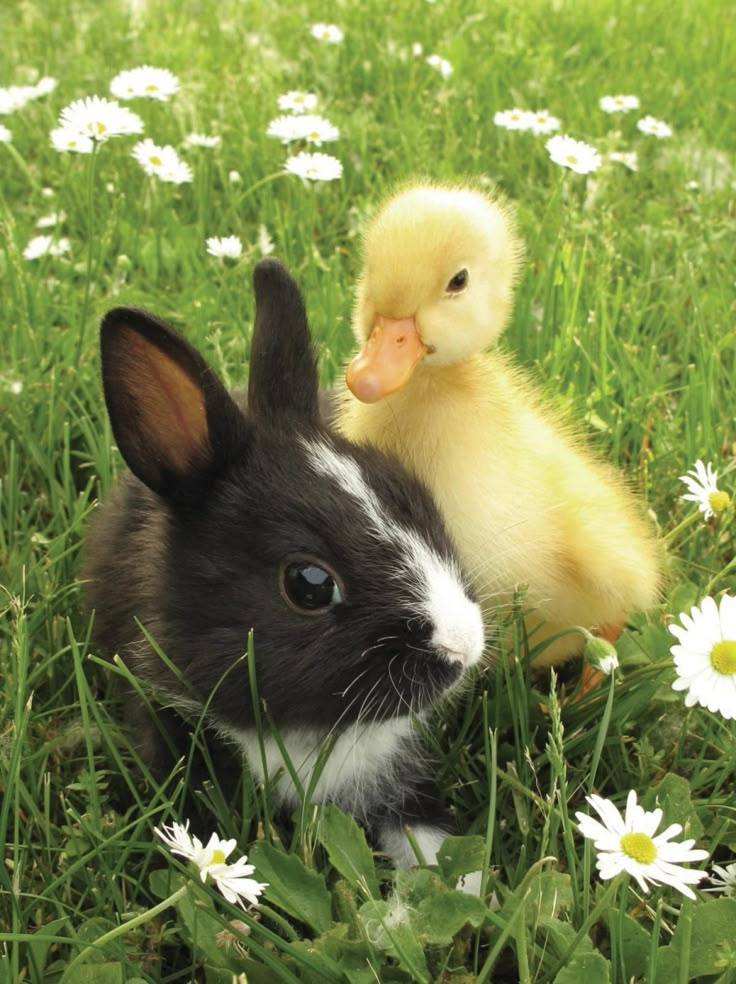 In the mass of green fodder beet tops should not be more than 30%.
In the mass of green fodder beet tops should not be more than 30%.
The aerial part of legumes, legumes and cereals is rich in vitamins and minerals, and also contains a large amount of proteins. However, experienced rabbit breeders advise using the above plants in a mixture with other feeds, since herbs alone will not be able to provide good nutrition and can lead to bloating in animals.
The diet of rabbits should be approximately 25% roughage. These include: hay, straw, tree branches. The optimal harvesting time is in spring and summer. Such food is very important, as it creates a feeling of satiety and contains fiber necessary for the normal functioning of the digestive tract.
The main share of roughage is hay. Harvest it using the same herbs as for green fodder. Legume hay has much more plant protein than grain hay, so it is more nutritious. Haylage is under-dried hay pressed into briquettes. Rabbits eat it with gusto, and also love clean straw if it's well dried.
Juicy food (vegetables)
- Potato: high in fast digesting starch. It is recommended to give in boiled form;
- Carrots contain C and B vitamins vital for breeders, pregnant/nursing females and growing rabbits. It is the main source of carotene in winter. The daily norm for an adult animal is up to half a kilogram. Young rabbits are started on portions weighing 20–30 g.
- Cabbage contains many minerals, vitamins C and E. Helps to improve the quality of the skin and fur. Introduced into the diet of animals gradually, used both raw and boiled.
- Zucchini helps to better digest other foods. They are given fresh.
- Pumpkin improves coat quality and has a positive effect on milk production in lactating rabbits. It has a good effect on digestion and weight gain in animals. Offered to rabbits both raw and boiled.
- Feed and sugar beet improves metabolism and blood quality, improves immunity. Use raw or boiled, no more than 150–200 g for young animals and 250–300 g for adults per day.
 Excess beets can lead to diarrhea in animals. Table varieties are strictly prohibited.
Excess beets can lead to diarrhea in animals. Table varieties are strictly prohibited. - The diet of rabbits also includes melons, watermelons, turnips, Jerusalem artichokes, and radishes. However, their nutritional value is not very high.
Processed products of legumes and oilseeds (meal, cake of soybeans, peas, beans, sunflower, hemp, flax) are sources of fatty acids necessary for the body, including essential ones.
The composition of feed mixtures necessarily introduce products of animal origin: meat and bone or fish meal. Meat and bone contains about 40% protein and 14% fat, while fish contains about 45% protein and 7% fat. Flour is mixed into wet food in small portions - 5–10 g per individual.
Also, table salt must be present in the diet of rabbits. The rabbit needs 0.5–1 gram per day. For adults, the rate is increased by 1.5–2 times. When fattening animals, the daily amount of salt is 2-3 grams per individual.
Benefits of specialty foods
Complete nutrient mixtures can be prepared independently, but this is a very time-consuming work. To produce a quality product for feeding rabbits, you need:
To produce a quality product for feeding rabbits, you need:
- crushers, crushing components to the desired size;
- stocks of various grain crops;
- meat and bone and fish meal;
- protein-vitamin-mineral complexes;
- cake.
It is important to check the quality of incoming raw materials to minimize the risk of mortality. In the process of preparing mixtures for feeding rabbits, it is necessary to know exactly how much and what components are required, and at home or in a small enterprise it is difficult to achieve proportions. Because of this, there is a possibility of an excess of some nutrients and a deficiency of others, which can lead to improper formation of rabbits and young animals.
For the storage of compound feed, it is necessary to maintain normal ventilation in the room, a humidity level of not more than 75% and a temperature of up to 25 ° C. It is desirable to place bags on lattice racks or pallets. For small farms and medium-sized farms, buying ready-made feed can be more profitable than own production. The higher cost of the product is offset by guaranteed quality and time savings.
For small farms and medium-sized farms, buying ready-made feed can be more profitable than own production. The higher cost of the product is offset by guaranteed quality and time savings.
Benefits of compound feed produced by MEGAMIX
Our compound feeds for rabbits are presented in correctly formulated complete mixtures, which contain all the necessary nutrients:
| universal | for lactating queens |
|---|---|
| Ideal for weaned rabbits and fattening animals. | Also suitable for queens and rabbits. on milk feeding. |
Feed is produced in the form of granules and packaged in convenient packages: standard bags of 25 and 40 kg or big bags for large customers. The composition of the mixtures contains only valuable components that improve productivity, strengthen the immune system, positively affect the quality of the fur and the resulting meat, increase the growth and activity of rabbits.
Thanks to our own science-intensive production, we create recipes that best meet the needs of a particular breed of animal. The quality of incoming raw materials and the final product is carefully checked against more than 280 indicators in our analytical center, accredited to the international standard. Our requirements for commercially available compound feed for rabbits are stricter than GOSTs. All products undergo mandatory certification.
The company closely cooperates with VolGAU. The effectiveness and safety of all feeds are tested in a research center. Due to this, we are able to quickly navigate the needs of customers, clearly analyze each request and select the most profitable option for the customer. Our production facilities are designed to produce up to 180 tons of products annually.
We work not only in the central regions of Russia (Moscow and nearby regions), but also organize delivery to the cities of the Urals, Western Siberia, the North Caucasus, Crimea through an extensive network of dealerships.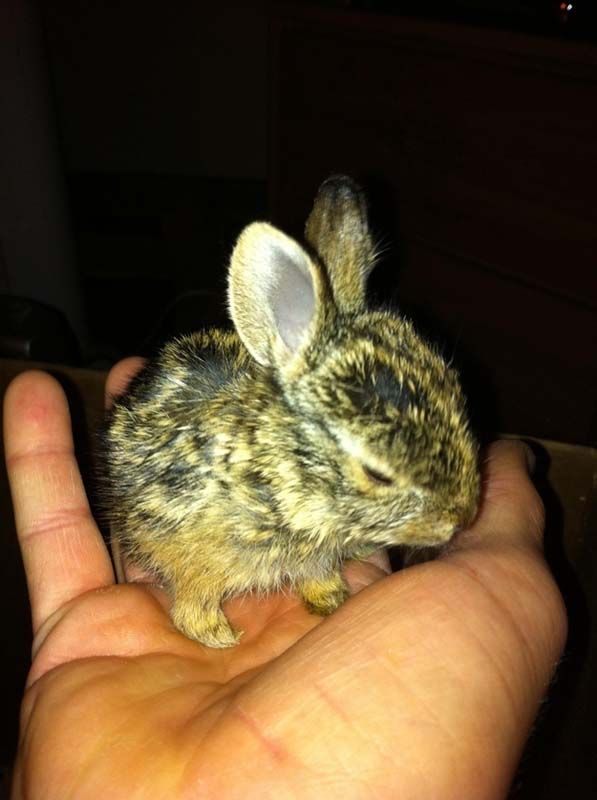
Feed mixtures from MEGAMIX are effective for breeding rabbits at home, on medium-sized farms or large complexes. Using them, you will provide the animals with all the necessary trace elements, vitamins and mineral supplements, get a high average daily weight gain and reduce the risk of livestock infection.
Norms and diet
For agricultural breeds (meat and fur)
In summer, one rabbit needs 40-50 grams of concentrated and roughage plus a pound of green. During preparation for mating, the amount of food increases: green for 600 grams, concentrated and coarse - 70-80 grams. For a pregnant female, you will need 550–700 grams of greenery and 70–90 grams concentrated and coarse. A lactating female needs at least a kilogram of greens per day and up to 150 grams of roughage.
In winter, the basis of the diet is succulent food (150–200 grams) plus hay (120–150 grams). The amount of rough and concentrated feed remains the same. During preparation for mating 150-200 grams of juicy, 90-100 grams of concentrated and coarse and 150-200 grams of hay.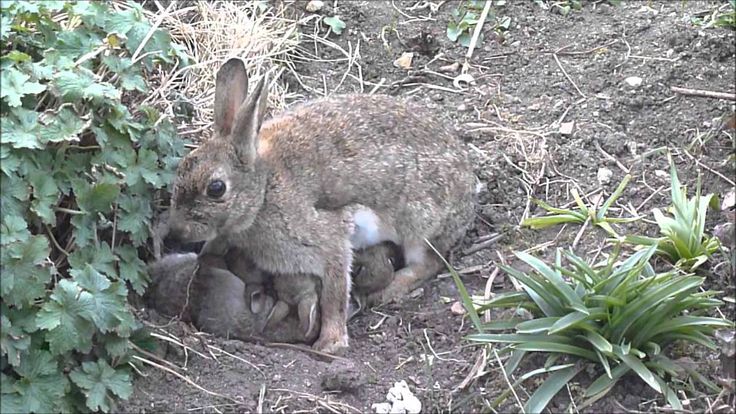 A pregnant rabbit needs 200-250 grams of juicy, 100-130 grams of coarse and 150-200 grams of hay. A lactating female will need 300-350 grams of juicy, 140-160 concentrated and coarse and 200-250 grams of hay.
A pregnant rabbit needs 200-250 grams of juicy, 100-130 grams of coarse and 150-200 grams of hay. A lactating female will need 300-350 grams of juicy, 140-160 concentrated and coarse and 200-250 grams of hay.
Fattening of meat breeds usually occurs in autumn and winter. When fattening, the amount of concentrated feed, bran and root crops (especially boiled potatoes) is gradually increased.
In ornamental breeds, digestion works worse than in agricultural ones. They can be given the following foods.
- Hay is the main feed for ornamental breeds. It should be clean and dry and should be replaced as needed.
- Grass - it can be added to the diet in summer. It is desirable to collect grass away from roads and other sources of pollution.
- Granulated food - 2 tablespoons per day.
- Vegetables and fruits - can be given little by little, in small pieces and only washed and fresh. Radishes, parsley, carrots are good. It is better to exclude beets and cabbage in order to avoid stomach problems.

A complete balanced diet for rabbits, of course, should include the main vitamins:
- A - has a positive effect on the functioning of the nervous and reproductive systems in wards, improves their general physical condition;
- B1 - responsible for the metabolism of carbohydrates in the body, normalizes the activity of the cardiovascular system, indirectly improves the functioning of the gastrointestinal tract;
- B2 - improves the condition of the skin and fur, optimizes the general physical condition of animals;
- B5 - normalizes the digestive system;
- B6 - is responsible for the absorption of proteins and simple proteins, as well as for the enzymatic balance in the body;
- B12 - promotes the absorption of proteins, is extremely important for the health of newborn rabbits;
- C - strengthens the immune system and normalizes the digestive tract;
- D - necessary for the proper development of the eared musculoskeletal system, promotes better absorption of minerals;
- E - is responsible for the development of the muscular system of pets.
 Stabilizes the work of the heart and reproductive system;
Stabilizes the work of the heart and reproductive system; - K is an essential vitamin for rabbit breeding.
Self-feed preparation
The mash is a delicacy for rabbits. The most popular recipe includes:
- boiled potatoes;
- carrots;
- oats;
- germinated wheat;
- table salt;
- bran;
- chopped hay.
The mixer is prepared using a blender or other chopper. To enrich it with biologically active substances, concentrated feed additives are added to it.
Hay is harvested using the same herbs as for green fodder. It is important to mow the plants before they bloom. The resulting raw material is dried on the street, and then allowed to lie down for some time in a well-ventilated place under a canopy (without direct sunlight).
Silage ingredients are crushed to fragments no larger than 1 cm in length. The resulting mass is placed in a sealed barrel and covered with a layer of sawdust 5 cm thick.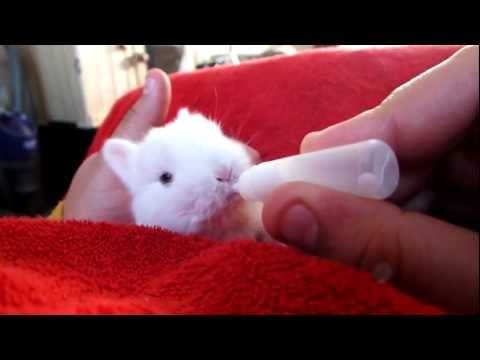 The resulting substrate is compacted until juice appears and pressed down with a wooden circle, on which a load is placed on top. In the process of silage maturation, the barrels are stored in a moderately warm place, and then removed to a cool room.
The resulting substrate is compacted until juice appears and pressed down with a wooden circle, on which a load is placed on top. In the process of silage maturation, the barrels are stored in a moderately warm place, and then removed to a cool room.
Nuances of feeding rabbits depending on the season
The summer diet of animals should consist of cereals by 30-40%, and in winter and with intensive fattening - by 50-70%. In the summer, green food predominates in the diet of rabbits, but with the onset of cold weather, juicy food - silage and vegetables - become the main part of the menu. The owners who grow vegetables and melons on their plots give the animals various root crops, cabbage, zucchini and pumpkins. Such food contains many vitamins, but little fiber and protein; in lactating rabbits, it contributes to more intense lactation.
When planning the volume of the product harvested for the winter, farmers proceed from the calculation: 40 kg of hay for a rabbit; 10–15 kg per head of potential offspring.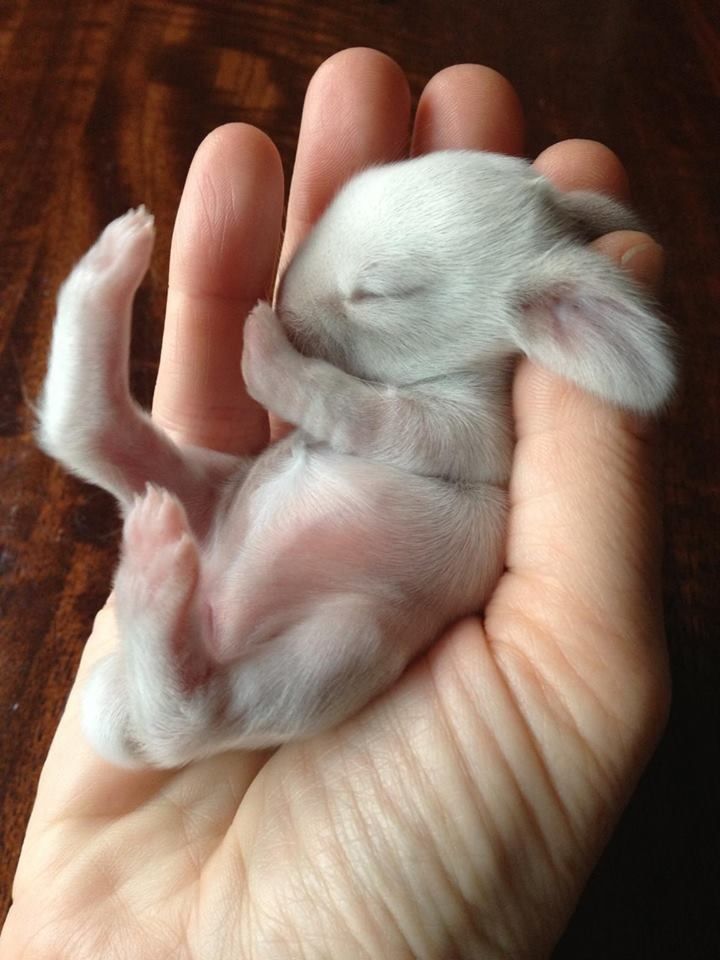 If there is not enough hay for all the livestock, then first of all it should be fed to females and lactating females, young animals. For adult males during the dormant period (if mating is not planned), the above product can be replaced with pea, lentil, oat or millet straw. You can’t feed it for a long time, because there are very few nutrients in the straw.
If there is not enough hay for all the livestock, then first of all it should be fed to females and lactating females, young animals. For adult males during the dormant period (if mating is not planned), the above product can be replaced with pea, lentil, oat or millet straw. You can’t feed it for a long time, because there are very few nutrients in the straw.
Branch fodder becomes a good help in winter. Timely harvested young twigs of trees contain quite a lot of vitamins. In addition, rabbits that have a constant opportunity to eat such food are much less likely to express a desire to gnaw on cages. Branches of only certain tree species are suitable for harvesting: willow, willow, maple, linden, acacia, mountain ash, poplar, aspen, ash, oak, alder. The content of nutrients in tree shoots is highest in the first month of summer.
Vitamin supplements are administered most often at the end of winter - in early spring, when there is a shortage of green and succulent fodder.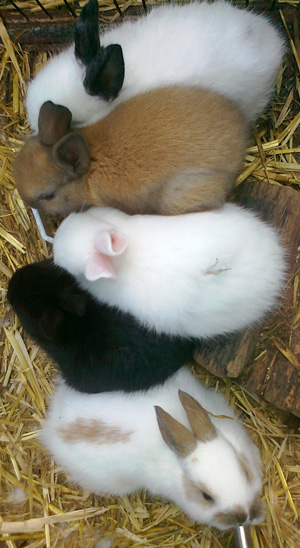 To fill the need for vitamins A and D, animals are given special concentrated preparations or fish oil is added to food. At the same time, the amount of fish oil required by rabbits is calculated depending on their physiological state.
To fill the need for vitamins A and D, animals are given special concentrated preparations or fish oil is added to food. At the same time, the amount of fish oil required by rabbits is calculated depending on their physiological state.
What should not be fed to rabbits?
It is better to refrain from adding birch branches to the diet, as they can lead to kidney disease. The same can be said about the branches of cherries, sweet cherries and plums. They contain hydrocyanic acid, which is quite dangerous for the body of animals. Branches of wild rosemary, buckthorn, bird cherry, apricot and elderberry are strictly forbidden to give to rabbits.
Even beneficial plants in excess can harm rabbits. From freshly cut grass, they have bloating of the intestines. Therefore, before feeding rabbits, it must be dried in direct sunlight. As a rule, an excess of cabbage leads to intestinal upset. It is also not recommended to give dirty vegetables to rabbits. This negatively affects the work of the digestive tract.
Rabbits should not be fed plants with a high concentration of toxins:
- hemlock;
- mustard;
- colza;
- digitalis;
- dope;
- we milk;
- Colchicum.
Buttercup caught in the feed mixture causes serious poisoning. Thrust is also dangerous. This flower is able to paralyze the muscles of the animal. Among the harmful herbs is aconite. Rabbits develop severe salivation, convulsions, and a slow pulse. Aconite poisoning leads to the death of the animal. From the marsh marigold in rabbits, the work of the kidneys is disrupted.
For the most part, the rate of weight gain and the taste of meat depend on proper nutrition. If you follow all the recommendations for feeding rabbits, you can quickly get large carcasses with good fur at the exit and significantly increase the livestock when breeding decorative breeds.
Insertion of nasogastric and nasojejunal tubes
Insertion of a nasal enteral feeding tube is a common procedure for children with cancer. A thin, flexible, hollow tube is passed through the nose and esophagus into the stomach (nasogastric tube) or intestines (nasojejunal or nasoduodenal tube). This enables the patient to receive nutritional support and medications through the tube. A nasogastric tube is also used to drain air and other stomach contents.
A thin, flexible, hollow tube is passed through the nose and esophagus into the stomach (nasogastric tube) or intestines (nasojejunal or nasoduodenal tube). This enables the patient to receive nutritional support and medications through the tube. A nasogastric tube is also used to drain air and other stomach contents.
If anesthesia is used during insertion of the probe, the patient will be asked not to eat or drink for a certain amount of time before the procedure. It is very important to follow the instructions for preoperative fasting. The patient may be asked to follow fasting instructions also after the procedure.
-
Insertion of a nasogastric tube is usually performed in the patient's room while the patient is conscious.
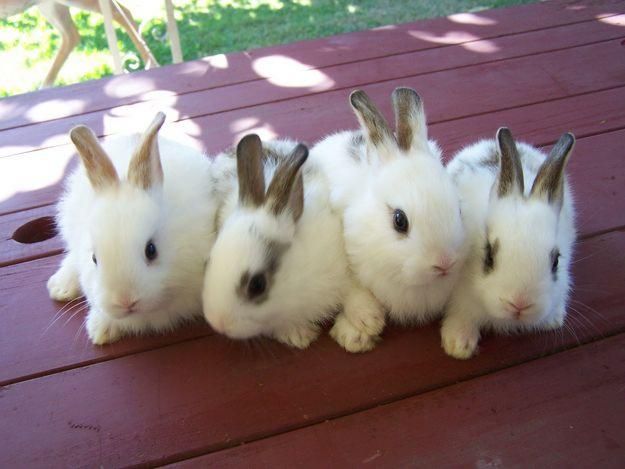 During the procedure, it is important to breathe evenly and relax. To facilitate the advancement of the probe, you can swallow or drink water through a straw.
During the procedure, it is important to breathe evenly and relax. To facilitate the advancement of the probe, you can swallow or drink water through a straw. If the patient is conscious during the procedure, the process includes the following steps:
- The patient should sit upright or lie down with their head elevated.
- Children may be given a special medication to help them relax during the procedure. Sometimes a local anesthetic may be used to reduce pain and the gag reflex.
- The appropriate probe length depends on the age and body size of the patient.
- Lubricate the end of the probe with a special compound to facilitate passage.
- The patient will be asked to lower the head down so that the chin is pressed against the chest.
- A nurse or other healthcare professional will hold the probe and insert it into the patient's nostril. The probe will slowly move through the nasal passage.
- During the process, the patient will be asked to swallow or drink water in small sips.
 So the probe will be able to take the desired position.
So the probe will be able to take the desired position. - Doctors will take X-rays or analyze stomach contents to make sure the tube is in the correct position.
- The probe is fixed to the patient's face with an adhesive plaster.
Change your nasogastric tube as scheduled (usually every 30 days) or as directed by your doctor.
The steps taken may vary depending on the approved hospital procedures, facility capacity, medical judgment, and patient needs. Be sure to discuss your upcoming procedure with your healthcare team.
-
Nasoduodenal and nasojejunal tube placement is usually performed under general anesthesia.
Nasoduodenal and nasojejunal tube insertion order:
- The patient is taken to the interventional radiology or treatment room.
 If hospital policy allows, parents will be able to stay with the patient until the procedure begins.
If hospital policy allows, parents will be able to stay with the patient until the procedure begins. - In children, this procedure is usually performed under general anesthesia. During the procedure and during recovery after anesthesia, the patient's heart rate and pressure are monitored.
- To facilitate passage, the end of the probe is lubricated with a special compound.
- The procedure is performed under x-ray control - the doctor inserts a probe into one of the nostrils and slowly advances it further through the nose, down the esophagus and into the stomach.
- Using imaging, the probe is advanced through the stomach until it is placed in the correct position in the intestine. A conductor can also be used to install the probe.
- The outer end of the probe is fixed to the face with adhesive tape.
The steps taken may vary depending on the approved hospital procedures, facility capacity, medical judgment, and patient needs.
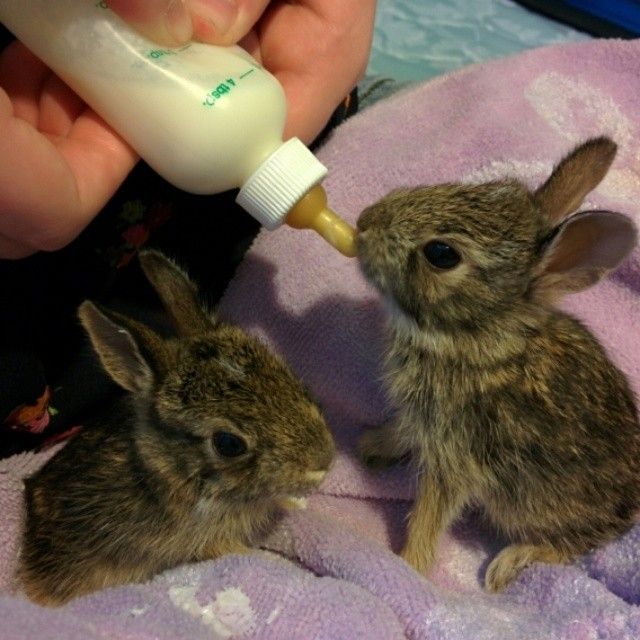
- The patient is taken to the interventional radiology or treatment room.

